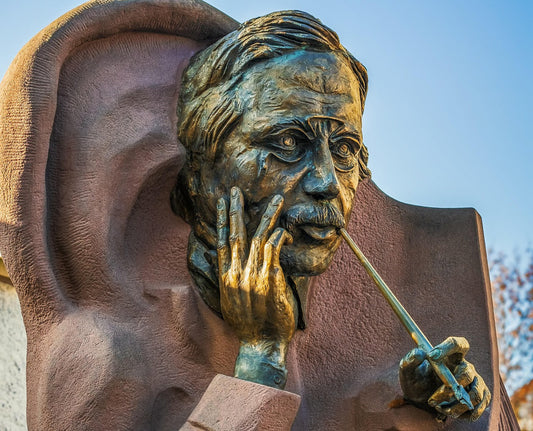In our continuing story of the creation of the Digital Lens we're finally at the point where we have a road map of what we want to build. Now it is time to actually build it.
This is the point, as the old saying goes, where the rubber meets the road. And what's interesting about this juncture is the number of times developers arrive here only to discover that their beautiful idea wasn't worth the gamble—the new circuit that doesn't live up to expectations. Throughout audio history, as in every field, there are more failures than successes (and you only hear about the successes). But, these are paths that must be taken if we are going to change the landscape.
This point in history was about 30 years ago and, back then, digital audio was somewhat like the wild west. No one knew what was and wasn't going to be sonically important: green pens, degaussers, clamps, cables, and new technologies. What mattered is that we tried new directions and then auditioned the results.
Most of what was being tried was either tweaks or additions/modifications to existing products. I was venturing out into the wild with a new and never-tried-before category of product. A standalone digital in and out separate. Today, upsamplers, isolators, reclockers, and interfaces are common. Back then, this was new and uncharted territory.
As an analog designer I understand how digital audio works but have zero experience building anything. I needed someone that not only understood digital audio but could grasp the technical challenges ahead and figure out how to mechanise the whole apparatus.
Enter, Bob Stadtherr. Bob, who has been PS Audio's chief engineer for the past 30 years, was then working as the head engineer at a theater lighting company in San Luis Obispo, California. I had hired him from afar because he was rumored to be a good engineer who could pretty easily design and program our front panel displays for the Genesis servo amplifiers.
At the time, I had been relying upon another outside engineer who had been working on our front panel display for an agonizing 6 months and still he couldn't deliver a finished product to us. He was stuck on the programming of the display interface. Out of frustration, I fired that guy and took a shot with Bob, who took one look at the schematic of the display and asked "what was this guy smoking?"
Oy. Bob wanted to scrap 6 months of work and start fresh. Reluctantly, I agreed. Two weeks later Bob delivered a fully functioning front panel display. I was frankly, stunned. When asked what programming language he used I was told none. He wrote the entire program in assembly (this is the actual bit-for-bit machine language used at the silicon level and is the most efficient but challenging way of programming).
Bob had my attention.








